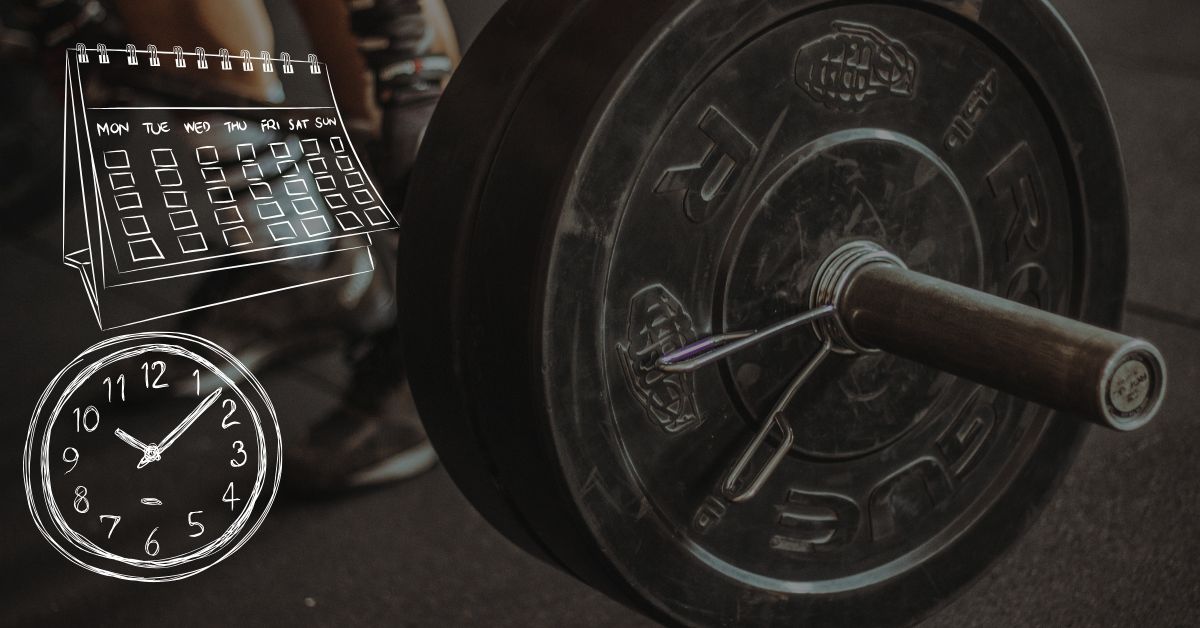Get ready to kick off winter with 7 Bamboos RFC!…

Pep Talks – does a motivating pre-game speech suit every athlete?
GUEST ARTICLE
In this fascinating article presented by Coach Logic, Scott Searle digs deep into the captivating world of pep talks and discusses what really helps to get the most out of your athletes. A highly recommended read, not just for coaches and athletes.
Nearly every movie about sports or coaching ends with a powerful pep talk from the coach that gets all of the athletes fired up and ready to go. The storyline usually follows the same pattern; the team starts disjointed or troubled, a hard nose coach changes the culture, the team makes it to a big match and faces adversity, and the pep talk helps everyone through it. For many people who do not coach, the power of pep talks seems magical. However, coaches know this is not that simple.
Not all coaches are great public speakers. Coaches lead in many ways. Through empathy, creating a competitive culture, technical or tactical expertise, or strong organizational skills, but the media and popular core values a great pump up speech above all else. There is no doubt that powerful speeches and effective rhetoric can influence behaviour.
Winston Churchill, JFK, Barack Obama, Abraham Lincoln and Margaret Thatcher all had the ability to influence public policy by their personal rhetoric. But for each of these leaders, their rhetoric was accompanied by decisiveness, policy expertise, and personal will. Coaches cannot lead on speeches alone.
The goal of any-pregame activity should be to help the athlete prepare for competition. Certainly, motivation and activation are significant components of that preparation and successful coaches should reflect on the best way to help athletes prepare. We have likely all had the experience of feeling motivated and excited after hearing a positive speech.
Whether at work, before a game, or during a difficult personal time, nearly everyone can remember a time where they have heard a speech and left feeling pumped up. This is great, but is it sustainable? How long does that feeling last, and what impact does it have on performance are questions that coaches should answer.
The Psychologist’s view
Educational psychologist Alfie Kohn talks about what he calls “the praise problem”.[1] He makes the argument that praise and external motivation “effectively undermines the intrinsic motivation that leads people to do their best”.[2] He provides examples of fifth and sixth grade students in Israel who were asked to work on a task that required them to be creative.
The students who were praised did not perform as well as their classmates who received more neutral comments from their teacher. What is even more interesting, is that the students who were praised, saw decreases in their performance in similar tasks from before they were praised. The researchers repeated their experiment with American college students and saw similar results; that praise effectively leads to a tangible impairment in skilled performance. [3] The research concluded that “the most effective way to disrupt skilled performance is to compliment the performer immediately beforehand.”[4] Do you still want to do a pep talk before the game?
As coaches learn more about the Ideal Performance State, you see greater variance in athlete preparation. The ideal performance state has been described as “that mood, feeling or state in which you feel totally focused, both mentally and physically, on your …performance and are confident that you will perform to your best; like being on automatic pilot.”[5] The Ideal Performance State is “analogous to flow”[6] Mike Krzyzewski the Head Coach of Duke Basketball and the USA Men’s Basketball teams tracks athletes out of body experiences as evidence of their preparation.
In his book “Five Point Play”, he recalls the time where Duke was playing Arizona in the Final Four tournament and “Arizona was playing great. They kept coming back. Four separate times, they cut the lead to three points. But every time we needed a play, one of our guys stepped forward…Shane had three out-of body experiences”.[7] Shane Battier recalls the same game by saying “I was in the zone.
I felt detached, like I was on the outside looking in on a basketball game. It was an out-of-body experience. It all happened because I played a poor first half and I didn’t want to let down my teammates in the second half.”[8] What is most interesting about that performance from Battier, is that, not only does he eloquently describe his experience, but he identifies his intrinsic motivation. It is very likely, that regardless of the speech making skill of Coach Krzyzewski, interventions or interference from his coach would have taken him out of his personal IPS and hurt his flow.
Athletes now best
Athletes know themselves the best. They know what inspires them and what motivates them. They also know where they are on the preparation continuum. In his book “Inside Edge”, Dr. Peter Jensen discusses the spectrum between relaxed and what he calls “five-foot flame syndrome”. [9] In the “profile of a choker”, athletes become too activated and begin to miss critical information and can no longer perform their skills. [10] Coaches are far more likely to deliver “big” pre-game talks, in big games. In these instances, athletes are already activated, or the team would not be in that big game. Delivering a speech that further activates, an activated athlete, in a big game, has the potential to push them into a situation they cannot control which would hinder performance.
There are many tools athletes can use to identify their personal activation level before competitions, Dr. Peter Jensen includes many in his book. Many athletes use music to help get them to their ideal activation level. In the 2016 Rio Olympics, many athletes were seen with earphones pre-competition using music to help them prepare. The music is very individualized and likely different based on the importance of the competition.
What are they listening to?
Dr. Nicole Forrester is a Canadian high jumper who set records that still stand at the Big Ten Conference and Big Ten Conference Championship. She is an 8-time Canadian Champion, a member of 20 National Teams, a Commonwealth Games Gold Medalist and an Olympian. She also holds a PhD in sport psychology.
Dr. Forrester used music before every major competition, but always listened to opera music before she jumped.[11] At first glance, listening to Andrea Bocelli does not seem like the ideal type of music to get pumped up before a competition, but Dr. Forrester explained that she “knew she would be activated by the crown and the intensity of the competition, and opera helped her calm down.” [12] Clearly, pre-game activation is highly individualized. If one athlete needs opera to prepare, and another would like to listen to hip-hop, it is difficult for any coach to address both of those needs in one speech.
The value of pre-game speeches are also highly dependant on what sport you are preparing for. Every New Zealand National team performs the Haka before international competitions.
The Haka is a type of ancient Māori war dance traditionally used on the battlefield…Haka are a fierce display of a tribe’s pride, strength and unity. Actions include violent foot-stamping, tongue protrusions and rhythmic body slapping to accompany a loud chant. The words of a haka often poetically describe ancestors and events in the tribe’s history.[13]
YouTube has examples of New Zealand National team athletes from many different sports performing the Haka. For sports that require a great deal of activation like rugby or American football, the activation makes a lot of sense. However, for sports that require patience and precision, it seems out of place.
That level of activation seems inappropriate and unhelpful for a golfer or a bi-athlete who needs to regulate their heart rate. In my sport of softball, depending on what position you play, or where you bat in the order there could be up to a 45-minute delay from the beginning of the game and an athlete’s involvement.
Imagine a fiery pre-game speech from an impassioned coach, motivating and pumping up a player, then having her run to left field and wait 45 minutes to field a fly ball or take their turn at bat. The spike in emotional energy will have worn off and leave the athlete feeling drained.
Terry Francona is the manager of the Cleveland Indians of Major League Baseball. He is one of the most successful managers in history having led the Boston Red Sox to two World Series titles and most recently the Cleveland Indians to a second-place finish.[14]
He is also close friends with Scott Pioli who served as the General Manager of the New England Patriots and has since moved to the Kansas City Chiefs. Francona used to bring;
Pioli into the Red Sox’ clubhouse a few minutes before the game and watch him do a slow burn when he hears the loud music and sees how relaxed all the players look. Where’s the passion? Where’s the fury? What are those guys doing over there-dozing? Are you kidding me? “
Francona said that he “has to tell him all the time, ‘Scott, we play 162 of these things…its different in football, where they play one game a week and [game day} is, like sacred. We do this every day. And if we put too much emphasis on one game, if we have too many team meetings, if we get up for every game the way they do for football, its not going to work.”[15]
Very clearly, Terry Francona understands the difference between sports in athlete preparation and activation and allows athletes the freedom to prepare the way they need to.
Nearly everyone can remember a time where they were lacking confidence or felt discouraged and a motivational talk from someone they cared about perked them up. For athletes, this can help them out of a slump or change their perception of themselves which could help performance.
However, relying on this sort of extrinsic motivation is very risky for an athlete. What if her coach is not there? Or what if the coach uses the same speech every time? Athletes should take accountability for their own performance and ensure they are activated and motivated intrinsically. The Globe and Mail is a Canadian newspaper and in 2011 published an article entitled “A Pre-Game Talk for the Ages”. [16]
The article makes the claim that “some of the most memorable moments in sport…hinge on the coaches pre-game talk” and goes on to tell a heartwarming story about a youth hockey game where the coach made having fun the focus of the game.
“Okay Bruins. Listen up! I want you to remember one word today: fun.” He turned and underlined the word one more time, then threw down the piece of chalk to punctuate the drama. The room was spellbound. I smiled. This was perfect, I thought.
The coach looked around the room at each player, then suddenly became animated. He pointed to the word and repeated it. “Fun. Do you know what that stands for?” He paused for a moment.
F stands for fast skating. I want everyone skating as fast as they can at all times. U. U stands for up the ice. Drive the other team’s net. This is the last game of the season and I do not want to see anyone holding back. Finally N,” he paused to make sure he had everyone’s attention. “N stands for no-nonsense. We are here to play hockey, not fool around.
We are here to play hard. We are here to win. Now get out there and show them what the Bruins are made of. On three give me a ‘Bruins!’ One, two, three, Bruins!”
All the dads eagerly joined in the final cheer, then congratulated the coach on his speech. Some even asked for a paper copy to mark the moment. With a pep talk like that, I am sure we won.[17]
This is a great story, and the coach should be lauded for having the best interests of the kids front of mind. However, the author’s comment about the success of the game hinge on the speech is troubling. Most hockey teams have 20 kids, and their success and fun is hinged to an adult coach’s speech?
Moreover, as laudable a goal as “having fun” is, this message would be better delivered through the actions of the coaches and other adults at practice and during other key times. If the athletes do not enjoy hockey, anything the coach is going to say 5 minutes before the game is going to change that. If you watch kids playing sports or any other games alone, they always have fun; it is the adults that usually ruin it for them.
The job of a coach is to; teach skills, value and honour sport, and then get out of the way and let the athletes enjoy the experience. That is how Shane Battiers out of body experiences happen. Athletes should be given the space to take autonomy for their own performances.
For minor athletes, they should be allowed the freedom to have fun and develop a love for sport. For competitive and elite athletes, they should be given the autonomy to prepare the way that their body and mind need.
Some athletes need to act like Hamlet, while others need bozo the clown. Some need to listen to Andrea Bocelli, while others still need more Beyoncé in their life. Every athlete, just like every human is different and taking time away during the most important time in the preparation period to give a speech that makes sense to the coach, does not always help the athlete.
Do you feel pumped up? For more on this topic click here.





